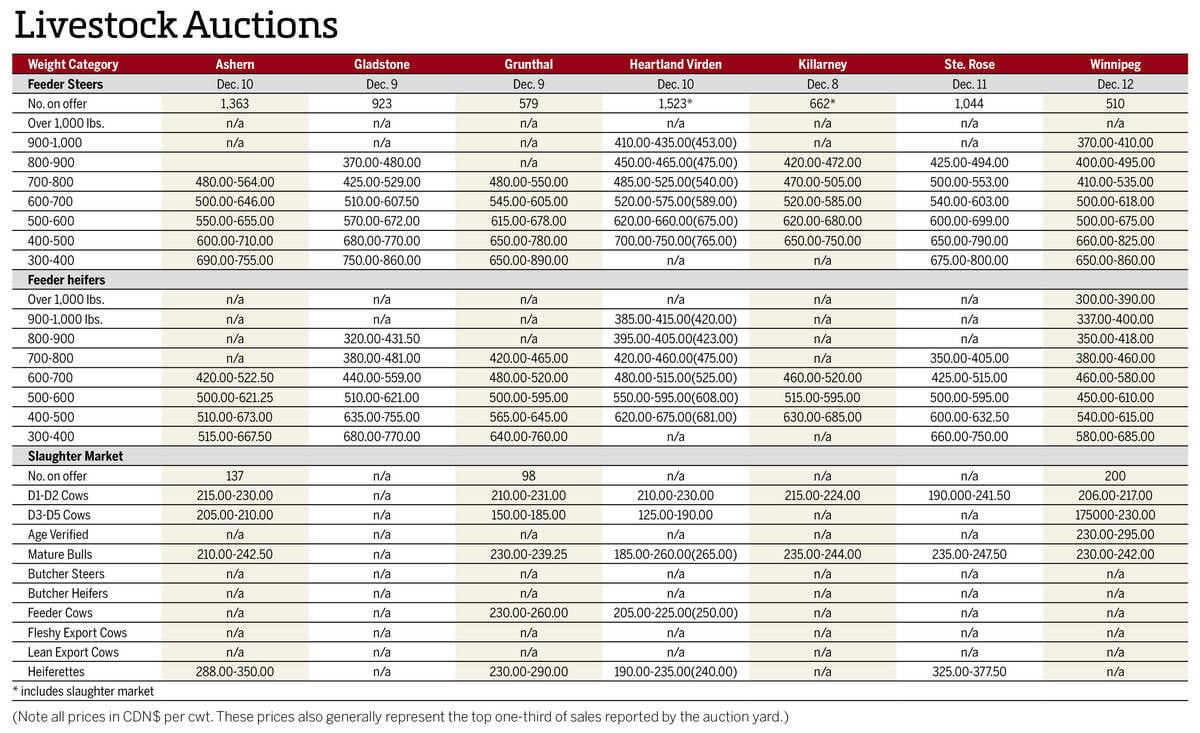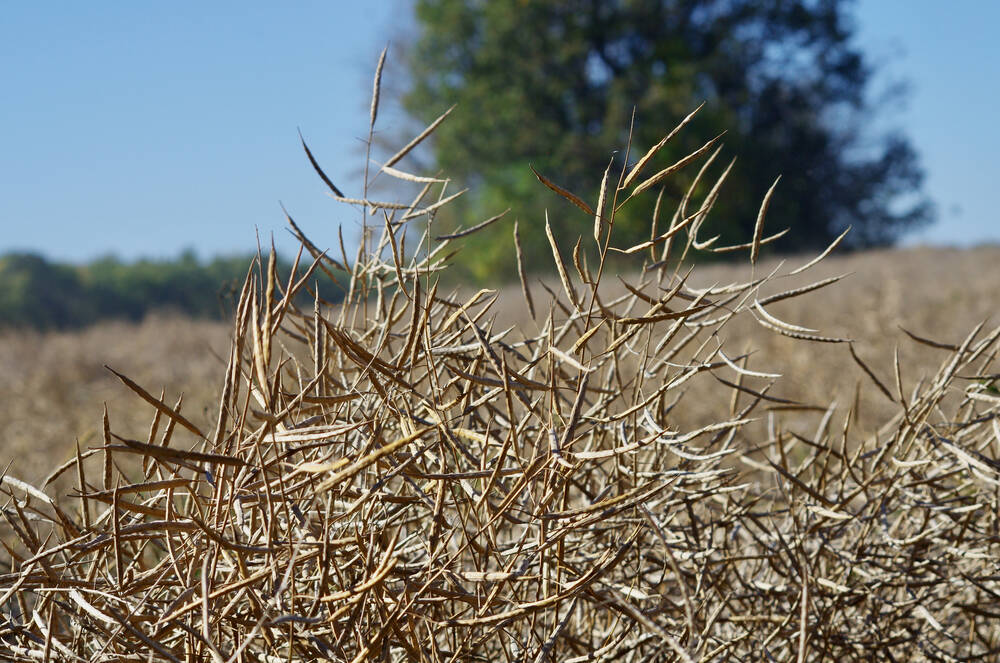Canola has slipped into a dilly of a pickle with its futures on the Intercontinental Exchange, which are at a point where values could quickly plummet or spike higher.
The downside continues to be the looming threat of tariffs by the new Trump administration. United States President Donald Trump seems to thrive on winding up people to generate endless controversy, something he’s successfully done with his threat of 25 per cent tariffs on all goods the U.S. imports from Canada and Mexico.
The latest from Trump is he will slap those tariffs on both countries as of Feb. 1. Perhaps blinded by his own stream of rhetoric, Trump has paid little, if any, heed to the negative impact those tariffs will have on all countries involved, including his own.
Read Also

Manitoba cattle prices Dec. 16
Here’s what local farmers were getting paid last week for their cattle at Manitoba livestock auction marts; prices covering the week Dec. 8-12, 2025.
Those tariffs could shove Canada into an economic recession and the impact on canola would certainly pull prices down. Added to that is the uncertainty in the U.S. over the federal government’s biofuel tax credits.
A few years ago, Canadian canola oil found a terrific conduit into its neighbour’s biofuel industry after it was deemed to be an acceptable biofuel feedstock. Now exports of canola oil are heavily dependent on that U.S. market.
Then in the dying days of the Biden administration, changes were made to the tax credits with canola being excluded. Initial hopes were that during the required 60-day review period, canola would be reinstated, but the chances of that are slipping away due to Canadian canola likely unable to meet the carbon requirements.
All of this may be for naught as the Trump administration appears to be quite set to take a very dim view on biofuels. The incoming secretaries of agriculture and energy, along with the new head of the Environmental Protection Agency reportedly are rather disdainful towards biofuels and the tax credits could end altogether.
Lurking in the background is the ongoing threat of trade action China could take against Canadian canola. Whether China waits until its so-called investigation into Canada dumping canola is completed, a heavy hammer is bound to slam down on the oilseed.
Meanwhile, canola’s saving grace could be its strong exports and domestic use. Both are currently at a pace that would outstrip available supplies, meaning price rationing will need to make its presence felt during the second half of the 2024/25 marketing year.
How much canola gets planted this spring will be guided by whether prices have tumbled because of Trump or spiked because there’s just not enough to go around.
















